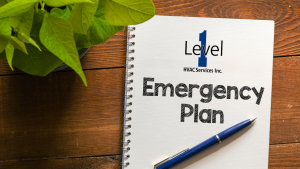HVAC Systems for Grow Rooms
As the cannabis industry continues to grow, so does the demand for quality indoor grow rooms. In order to achieve optimal growth and productivity, proper heating, ventilation, and air conditioning (HVAC) solutions are crucial. Property managers and general contractors need to understand the unique challenges that come with designing and implementing HVAC systems for cannabis grow rooms. In this guide, we’ll dive into the best practices and strategies for ensuring your grow rooms have the optimal environment for cannabis plants.
Understanding the Importance of HVAC Systems for Grow Rooms
The primary goal of any cannabis grow room is to create a controlled environment that mimics the outdoor conditions that cannabis plants require to thrive. HVAC systems play an essential role in maintaining the ideal temperature, humidity, and air quality within the grow room. The right HVAC system can optimize plant growth, prevent pests and disease, and ensure consistent yields. When designing an HVAC system for a grow room, it’s important to assess factors such as insulation, airflow patterns, and how to minimize energy costs.
Best Practices for Heating and Cooling
An efficient heating and cooling system is critical to maintain a consistent temperature in a grow room. The optimal temperature for cannabis plants is between 68 and 77 degrees Fahrenheit. Selecting the right HVAC system will depend on the size of your grow room and how much power is necessary. Electric heaters, HVAC units, and air conditioners all have their place depending on the size of your grow room and the need for humidity control. Additionally, proper insulation is necessary to ensure that the HVAC system is not overworked, leading to higher energy bills.
Controlling Humidity Levels in Grow Rooms
Controlling humidity is essential to minimize fungus and pests on your cannabis plants. The optimal humidity levels for cannabis plants fall between 40% to 60%. When the humidity level is too high, it can lead to the development of fungus and disease. On the other hand, low humidity levels can lead to the drying out of plants or even mold. A dehumidifier can be useful to regulate the humidity levels in the grow room.
The Role of Air Quality Control Systems
Air quality control systems are necessary to maintain healthy air quality and prevent the buildup of pathogens and toxins in the grow room. Airborne pollutants such as dust, mold, and bacteria can cause serious health problems for cannabis plants and workers. Air filtration systems, cleanroom panels, and HEPA filters are common tactics used to ensure healthy air quality in grow rooms. It’s important to regularly maintain the air filtration systems to ensure their effectiveness.
As the cannabis industry continues to grow, the demand for top-notch indoor grow rooms continues to increase. Property managers and general contractors should prioritize the design and implementation of HVAC systems that provide optimal air quality, humidity control, and temperature regulation. An effective HVAC system, when combined with proper lighting, nutrients, and plant care, can increase productivity and improve crop yields, making for a profitable and sustainable grow room operation.
Level One HVAC provides the highest quality HVAC design and installation services for your grow room operations. From specialized HVAC controls to ductless grow room HVAC systems, we offer comprehensive solutions and competitive pricing for any size project. Level One HVAC preventative maintenance programs will help you maintain total climate control all year long. Call us today for a free quote or check out our list of happy customers at www.levelonehvac.com
Contact us for all your HVAC needs:
– New Hudson, MI: #248-486-6500
– West Branch, MI: #989-999-4822
info@levelonehvac.com













